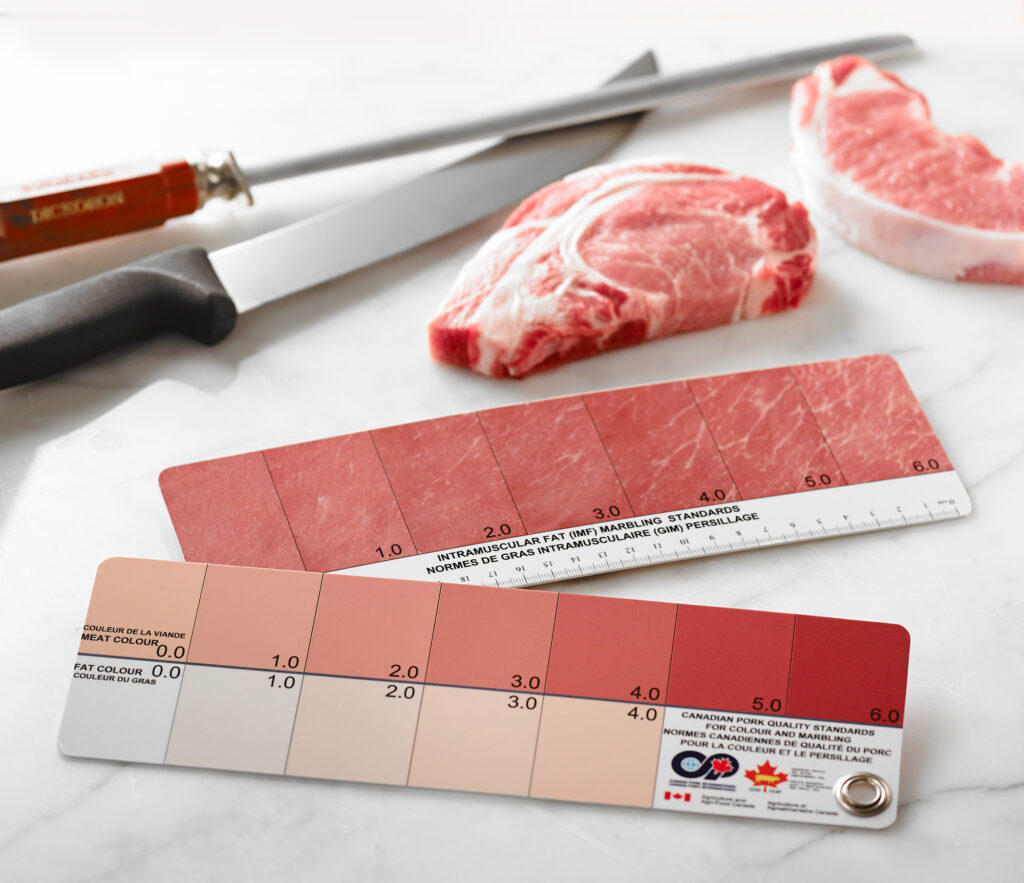By Swine Innovation Porc
Editor’s note: This article is a project summary prepared for Swine Innovation Porc, as part of a series of articles covering SIP’s work. For more information, contact info@swineinnovationporc.ca.

Focusing on delivering high-quality products makes for happier, repeat customers. When you’re already positioned as a leader in pork production and export, like Canada, there’s only one thing left to do: strengthen that position.
For agricultural commodities, classification and grading systems are the cornerstone of branding and reputation. These systems play a key role in marketing for end users by measuring and communicating the specifications that a buyer can expect.
One example is the ‘Prime’ and ‘AAA’ grades used in the Canadian beef industry, which are widely recognized as indicators of exceptional quality. For pork, Canada’s grading system has primarily been focused on factors like carcass lean meat yield and weight, leaving a critical gap when it comes to attributes that matter more to pork consumers.
By looking at the tools used to measure pork quality, however, research is now carving a path towards higher value and competitive advantage, through the process of grading.
Industry competitiveness benefits from standards
It may sound obvious, but if you have high-quality pork, grading for quality could help grow sales and earn top dollar for processors and the producers who supply their pigs. With that in mind, some industry stakeholders have been championing a primal cut grading system to arm customers with in-depth knowledge of what to expect from Canadian pork products.
There is now growing recognition across the value chain about the importance of on-farm and in-plant quality assurance programs, which are used to consistently meet the demands of diverse markets around the globe. As a result, two researchers, Manuel Juarez with Agriculture and Agri-Food Canada (AAFC) and Laurence Maignel with the Canadian Centre for Swine Improvement (CCSI), have been tapped to investigate grading techniques.
As the researchers began their investigation with processors, they identified significant opportunities for improvement. While buyers are willing to pay for quality traits, potentially increasing processor revenue, those traits are often still being measured with a subjective, rather than objective, approach. Unfortunately, these subjective methods lack the standardization and accuracy that premium buyers request.
Measure twice, cut once
In pursuit of more objective grading methods, the researchers sought to assess and improve current technologies for gauging quality and identifying areas of the carcass that could be evaluated for loin color, marbling scores and firmness. Although some such tools already exist, they tended to be bulky, pricey and time-consuming, and were rarely used; however, the study also discovered less-expensive options for classification that worked as well or better than the costly ones. These tools ranged from hand-held near-infrared spectroscopy devices to assess colour standards, along with belly sorters based on firmness.
Before long, processors began adopting these technologies and working with the researchers to incorporate them within their operations. Because flexibility was key to widespread acceptance by the industry, researchers ensured that the chosen tools were adaptable for processors depending on their clients and facilities. The systems work equally well in a small plant processing 100 pigs per day and one with a volume of 2,000.
For processors, it means they can now classify cuts based on quality with greater accuracy, while using fewer workers to do the job, boosting sales and improving pork prices for the sector as a whole. This should enhance client satisfaction and could benefit producers, as processors could choose to compensate producers for delivering pigs that meet preferred specifications.
Automation may be the next frontier
The researchers are excited about what lies ahead, including a robotic arm that could work for plants wanting full automation and a spin-off project looking at the use of a voice-controlled headset to evaluate loins.
In the meantime, they are pleased with the project results and the ongoing support from industry partners. Considering that these scientists are working to give the Canadian pork sector a competitive edge on the world stage, they feel confident that producers, processors, retailers and consumers will share their excitement.





